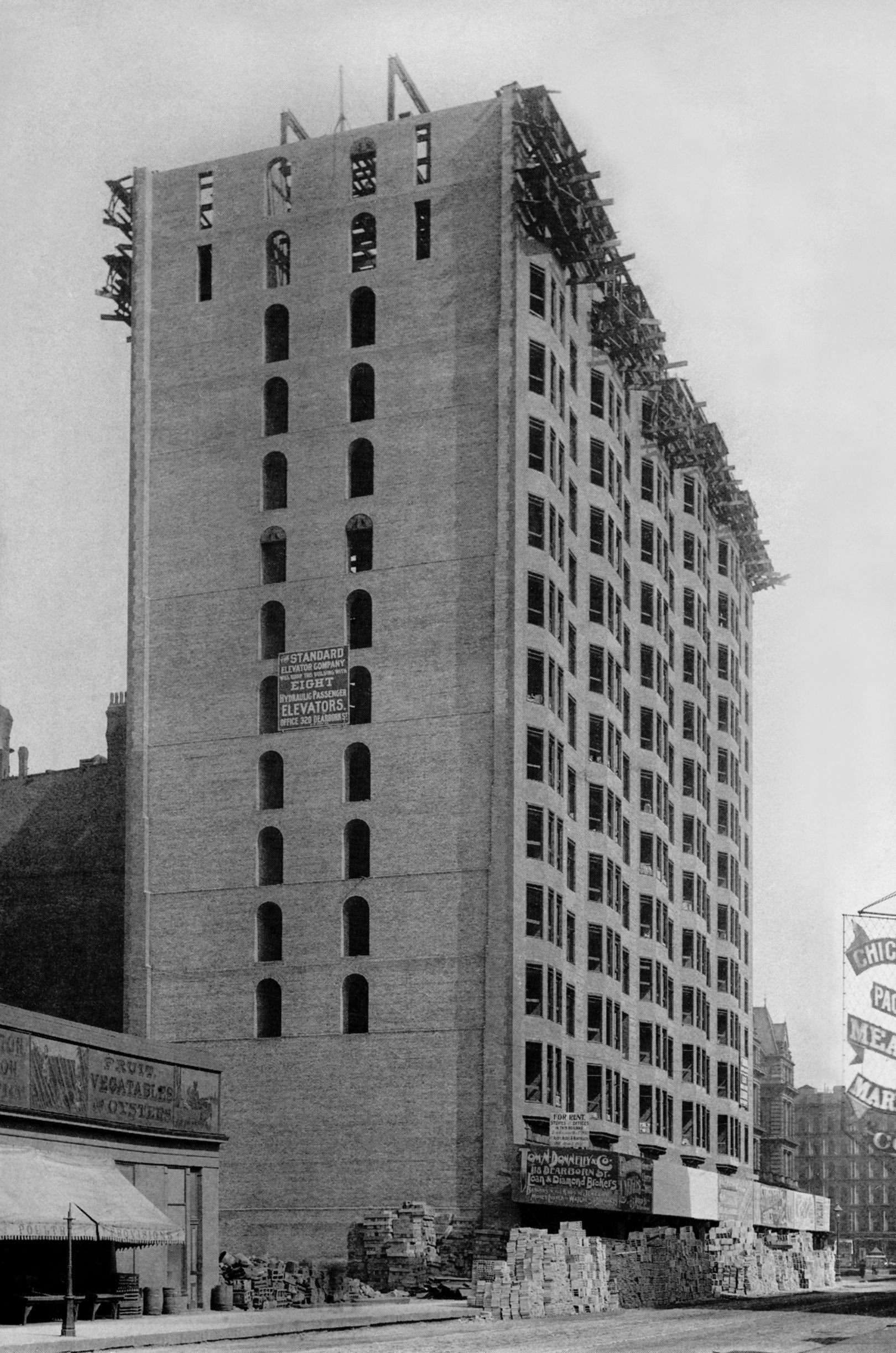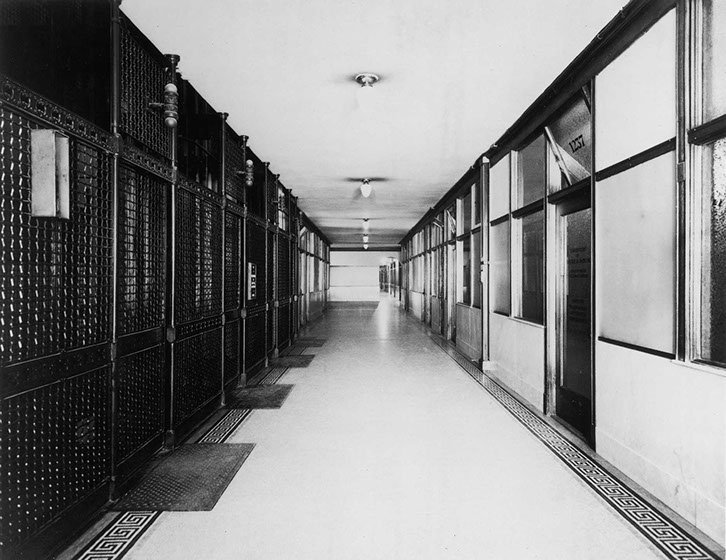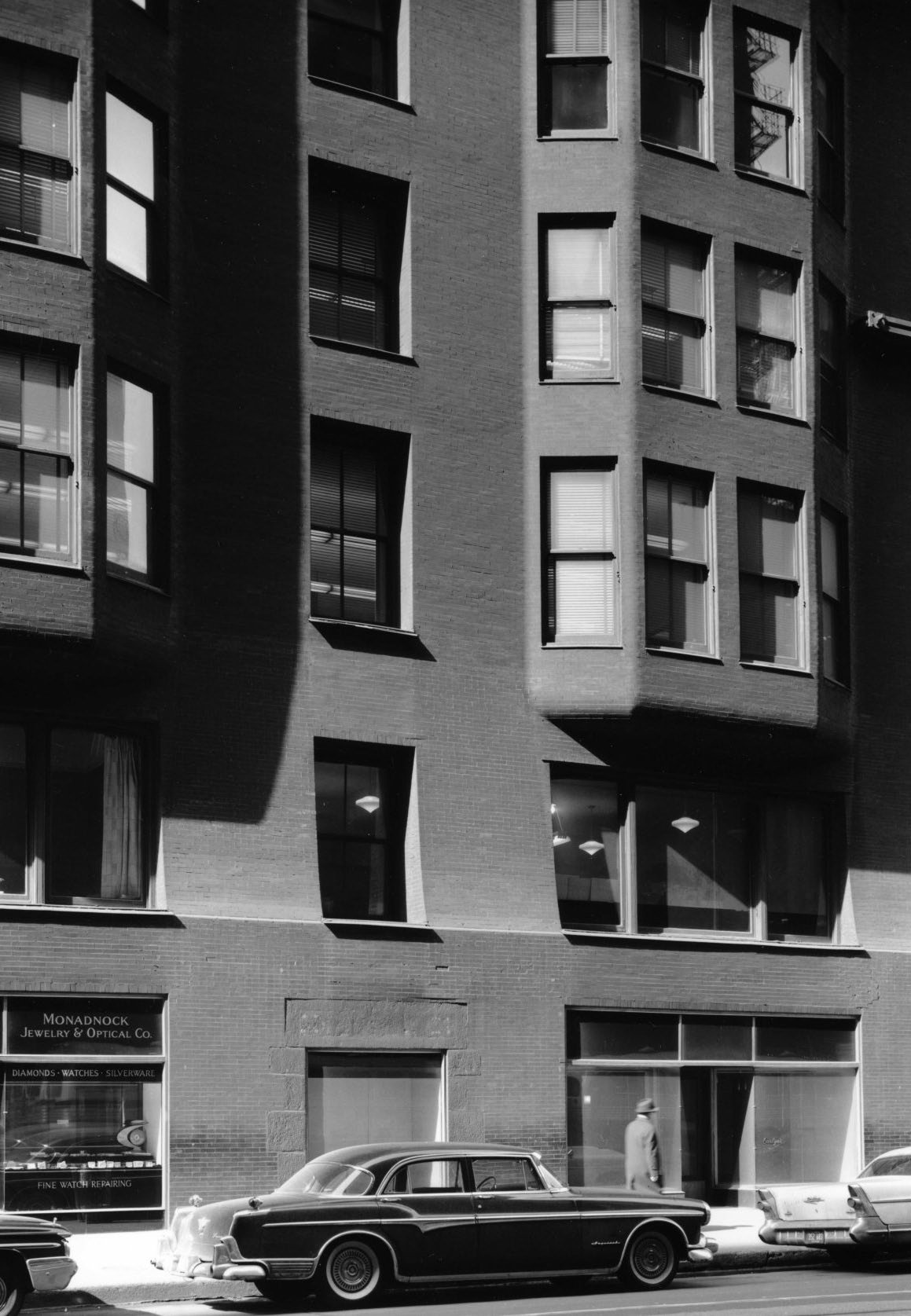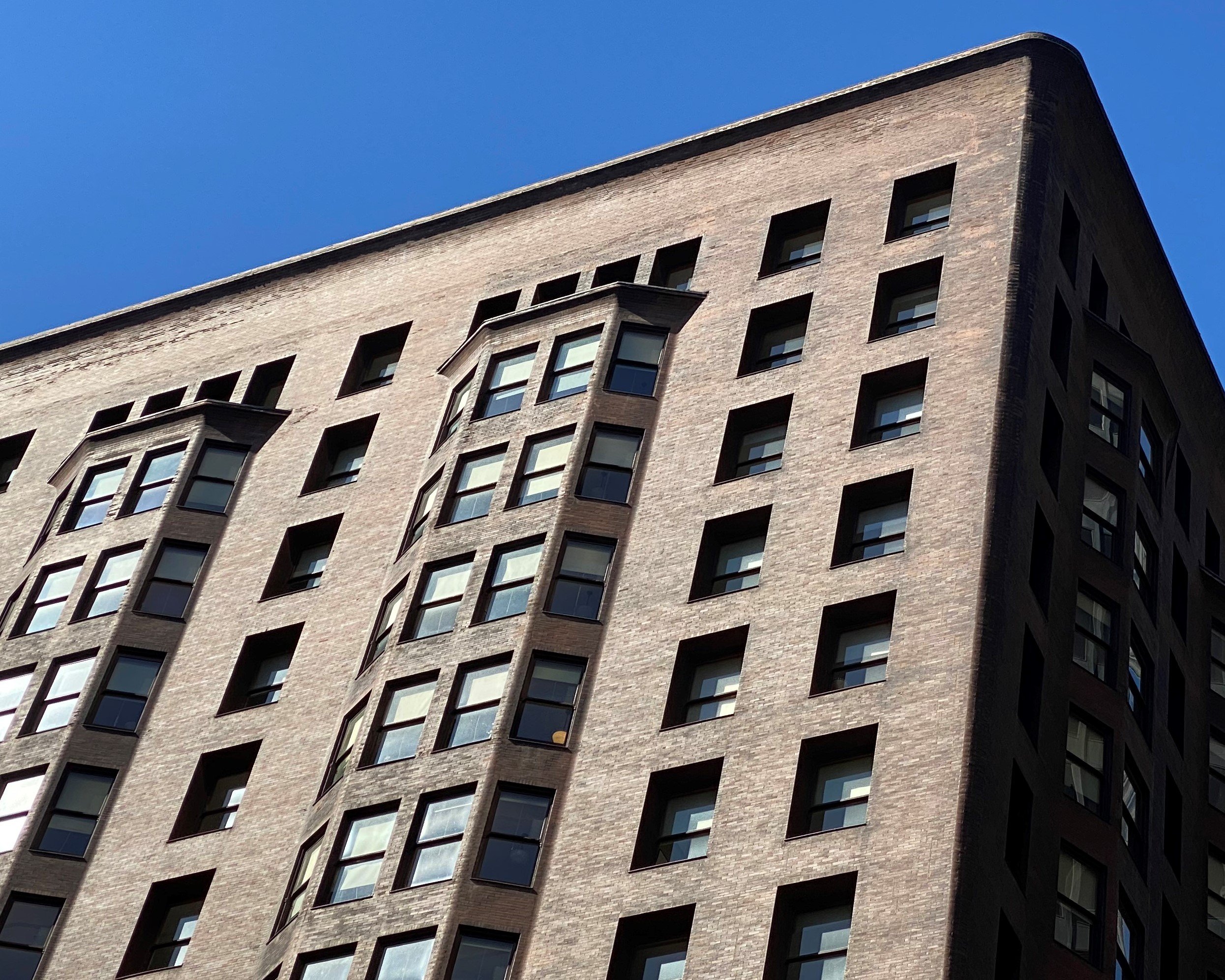
Building History
The North half of the Monadnock was John Wellborn Root’s last and boldest design. He died at the age of 41, while the building was under construction. At the time of his death, in addition to running Chicago’s largest architectural practice, John Root and Daniel Burnham were responsible for the design and construction of the World’s Columbian Exposition, which was to open the following year. Root’s death forced Burnham to concentrate his energies on the Exposition, so when the north half of the Monadnock rented quickly and its owners decided to build the south half right away, they commissioned another firm to design it: Holabird & Roche, the second largest practice in the City.
The two halves of the building are similar in scale and color, but quite different in style. The north half has been called a fountainhead of modern architecture because of its total absence of exterior ornament. Root decided that all he needed here was a graceful form for the structure itself. The south half of the building, on the other hand, is a masterful early application of classical architectural principles to the design of a tall building.
The Monadnock also marks a historic transition in the development of construction methods. Most of the buildings that preceded it were supported by their outside walls. The north half of the Monadnock is probably the tallest building ever built that is supported primarily by brick walls. At ground level, those walls are six feet thick. Half of the south half of the building is built the same way, but the south quarter of the building is supported entirely by a steel frame, as were most of the tall buildings that followed it. Today, this is called “curtain wall” construction: the façade doesn’t support the building, it’s just a “curtain” to keep out the elements.
The Monadnock was designed so that it could operate as four separate office buildings. Each section stands on its own lot, and at one time each section had its own entrance, elevators, heating system and name: from north to south, they were the Monadnock, the Kearsarge, the Katahdin, and the Wachusett, each the name of a Union navy ship and also the name of a mountain in the developers’ native New England.
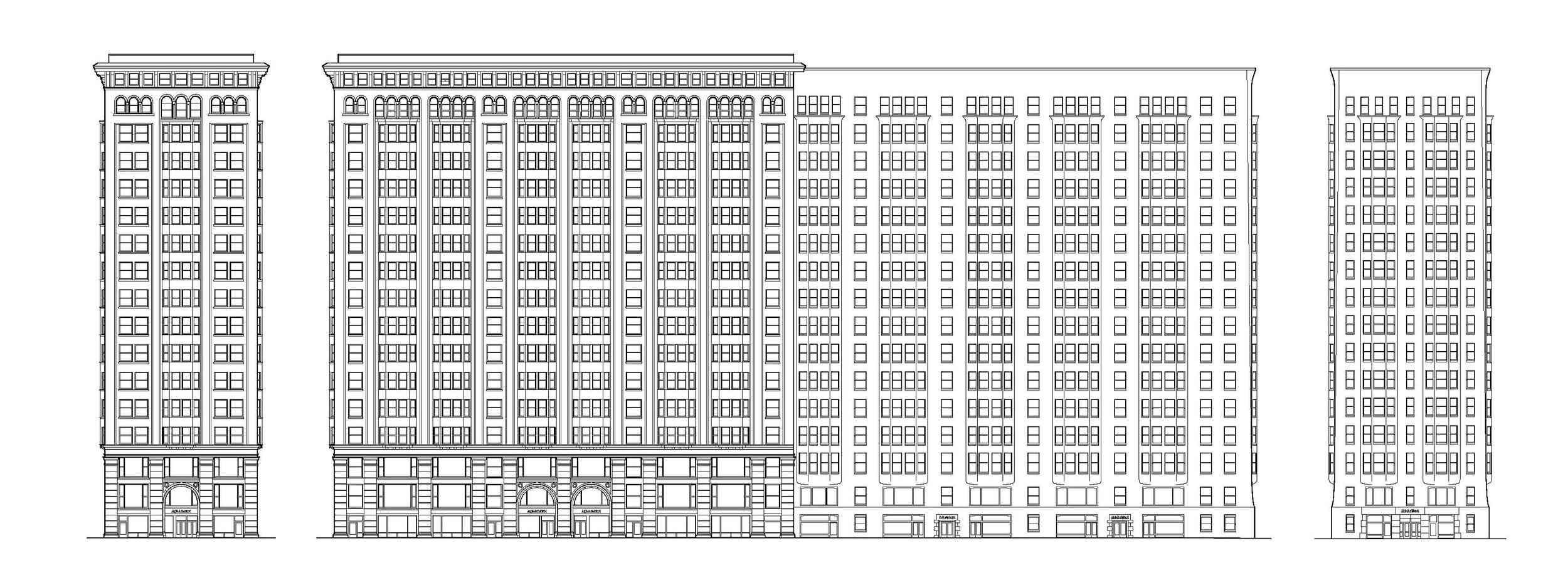
Inland Architect illustration, November 1889
Foundations, 1890
Monadnock rising, right background, 1890
Almost topped out, 1890-91
16th floor, 1892
View from Adams, 1894
View north along Dearborn, about 1920
Erich Mendelsohn photo, from Amerika, 1928
12th floor before remodeling, 1938
Streamline moderne entrance, 1938
Richard Nickel photo, about 1960
Richard Nickel photo, about 1960



